Pia Bauernberger makes custom coats to suit how individual designers work
Austrian designer Pia Bauernberger has designed a series of work coats with features tailored to the idiosyncrasies of specific designers and artists.
The project A Character's Coat saw Bauernberger create workwear with features like a high back pocket for artist and keen cyclist Anna Peyrer to store her rolled-up works on paper while in transit.
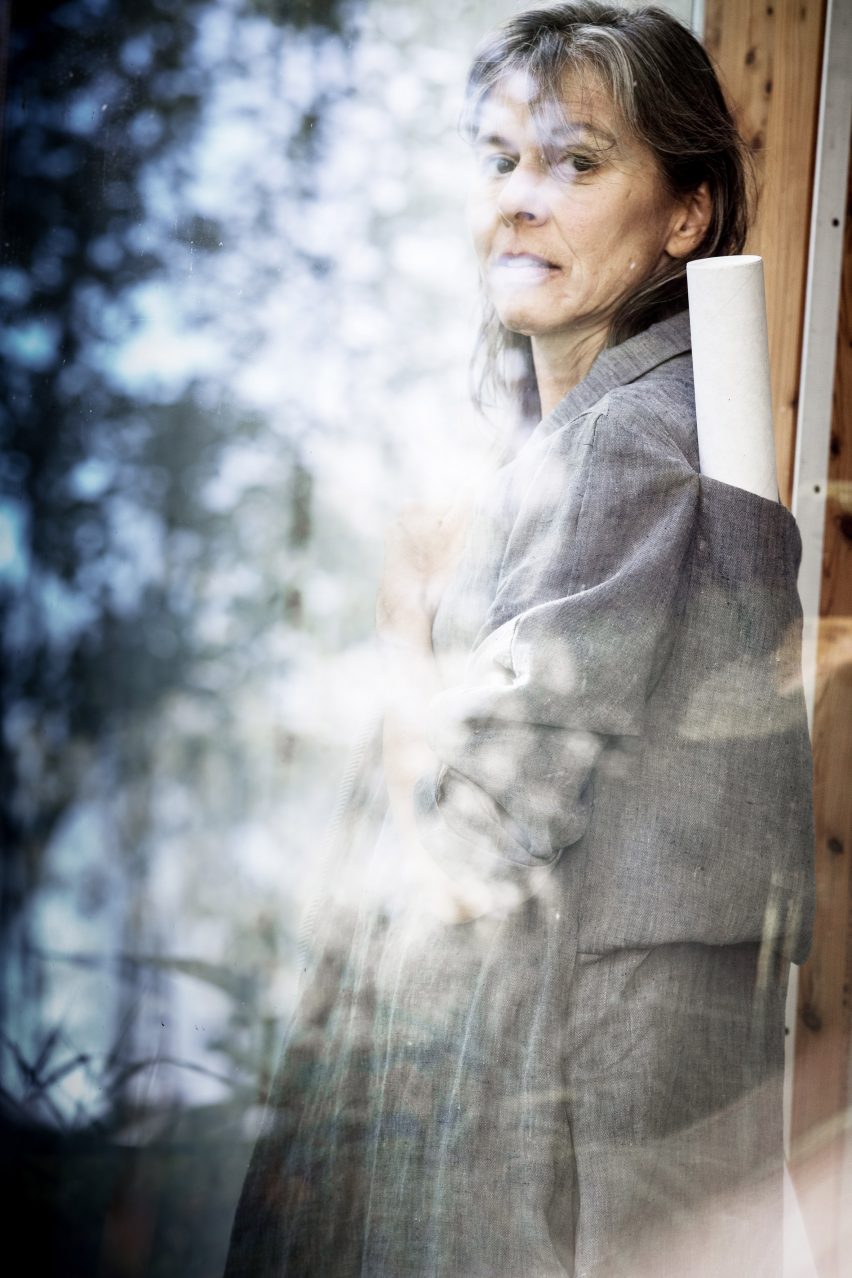
For light artist Siegrun Appelt, who often installs her work at night, Bauernberger created heat-resistant outerwear with highly reflective removable sleeves to keep her visible to her colleagues on-site.
Nine of the coats are on display during Vienna Design Week in an exhibition titled A Character's Coat Presents. Guided by curator Flora Peyrer-Heimstätt, each of the designers and artists involved made a reciprocal creation that is displayed alongside their coat.
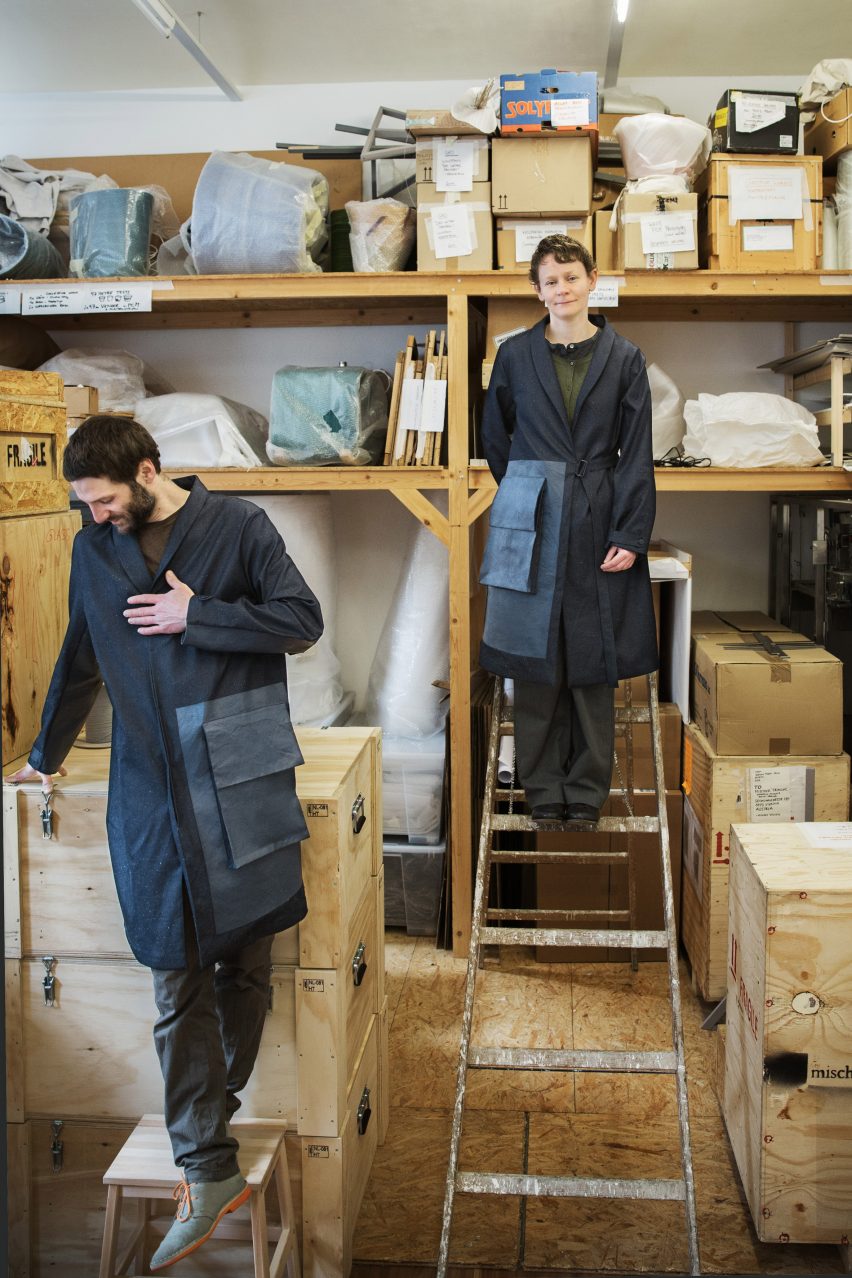
Also included in the project are design duo Mischer'Traxler – whose kinetic installation Isochrone is also on display during Vienna Design Week – as well as graphic designer Fabienne Feltus and jewellery designers Heirs.
Bauernberger's aim is to create links between fashion and other areas of the creative sector.
"A Character's Coat is an attempt to define workwear anew and make it accessible to the creative industries," she said. "Each coat creates space for various tools, thus enabling an extension of working space."
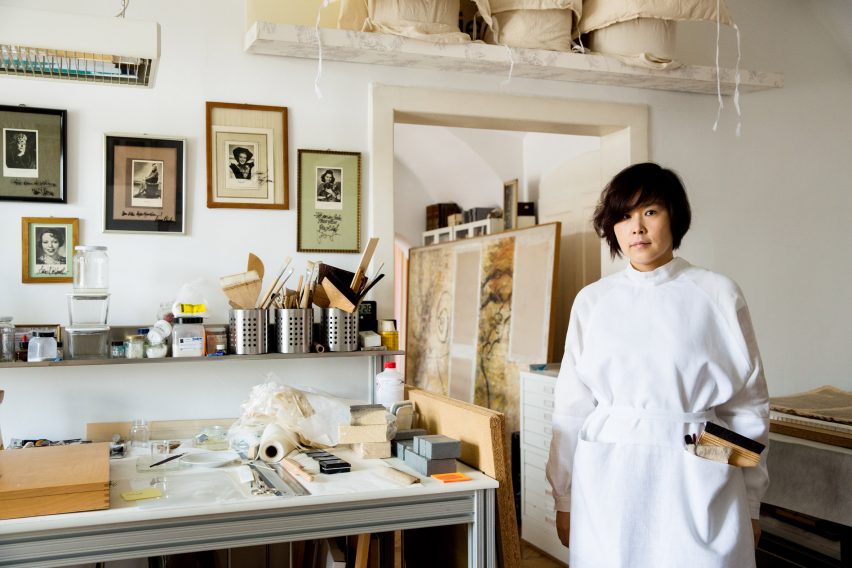
"Simultaneously, it becomes a working device itself and is therefore part of the chain creating value."
As part of her process, Bauernberger researched how the designers worked and what they valued in a piece of clothing. She then chose a material, cut and features that would aid them in their practice.
For Peyrer – who makes drawings and objects – Bauernberger created a loose-fitting, grey and blue coat from linen. As well as the cyclist-friendly pocket at the back of the neck, it includes smaller pockets at the front for notebooks and pens.
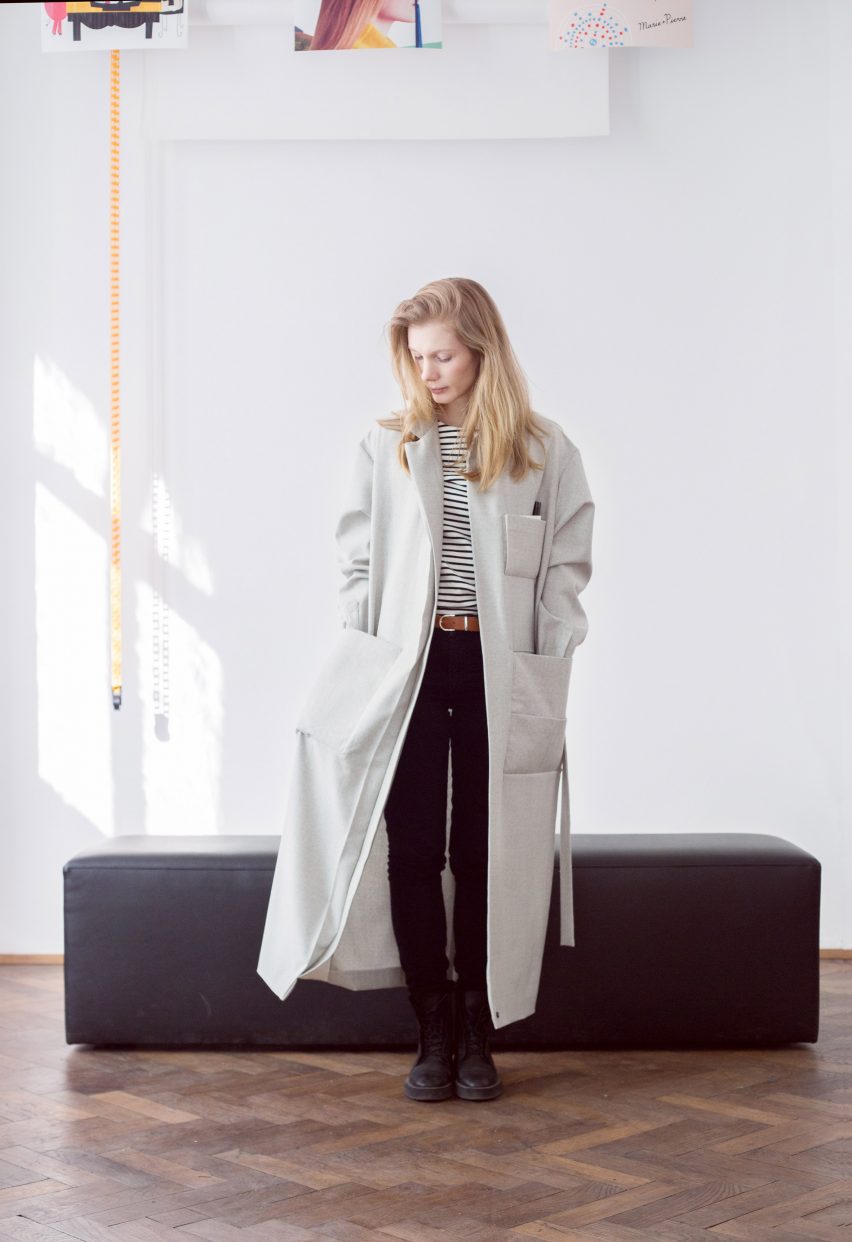
Appelt's reflective coat is made from a tough, fire- and heat-resistant fibre called Nomex, used in firefighters' uniforms, to protect her while she installs her light installations.
For times when she needs mobility more than safety, the sleeves can be removed, leaving only smaller reflective details around the pockets of the black torso.
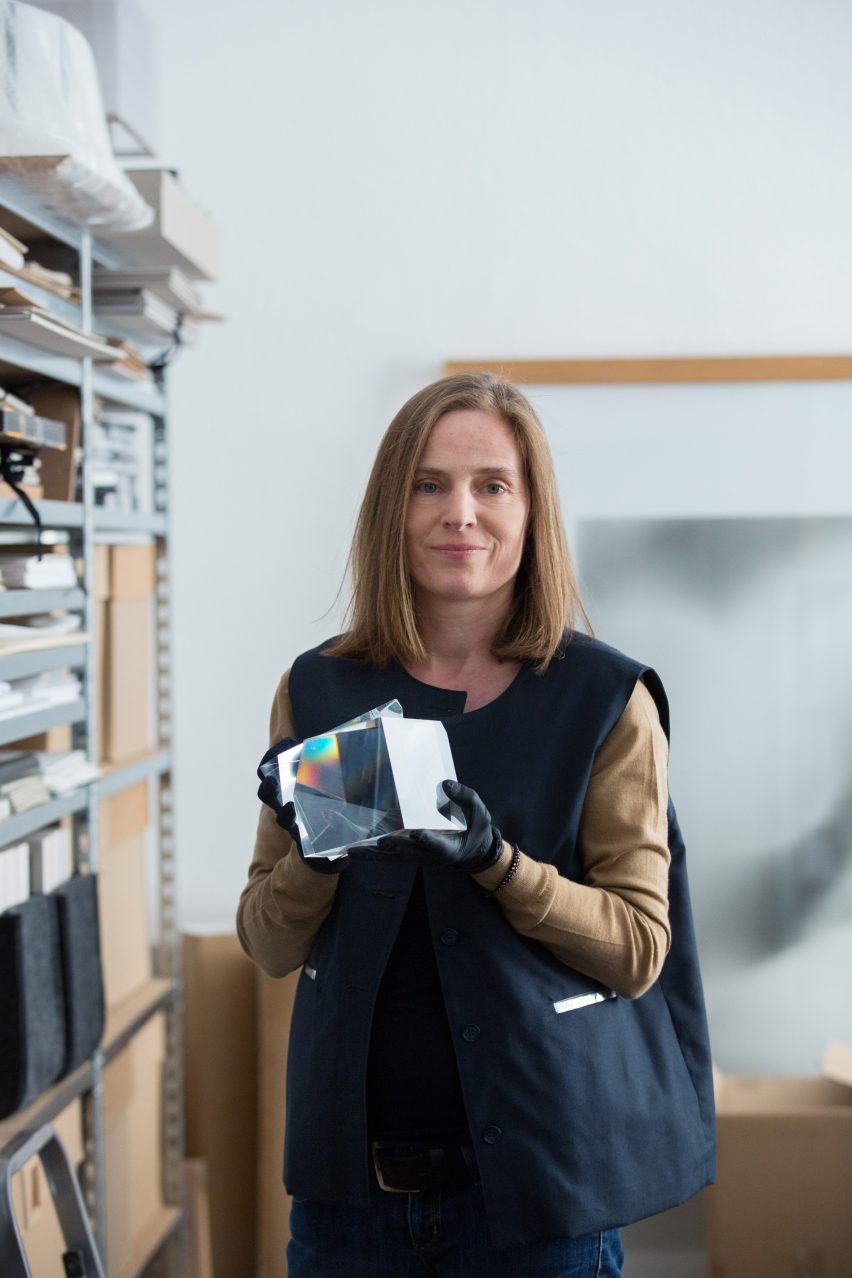
Bauernberger designed Katharina Mischer and Thomas Traxler of Mischer'Traxler's coats to serve them both in the studio and on work trips.
While using a navy blue Italian cotton denim throughout the coat, Bauernberger rubberised the front pockets on sleeves, creating a protective barrier from jigsaws, grinding machines and drills – which the duo use to create their objects and installations.
For Olivia Haas and Lauren Cooke of jewellery label Heirs, Bauernberger created a long black viscose, goat suede and leather coat with a removable apron.
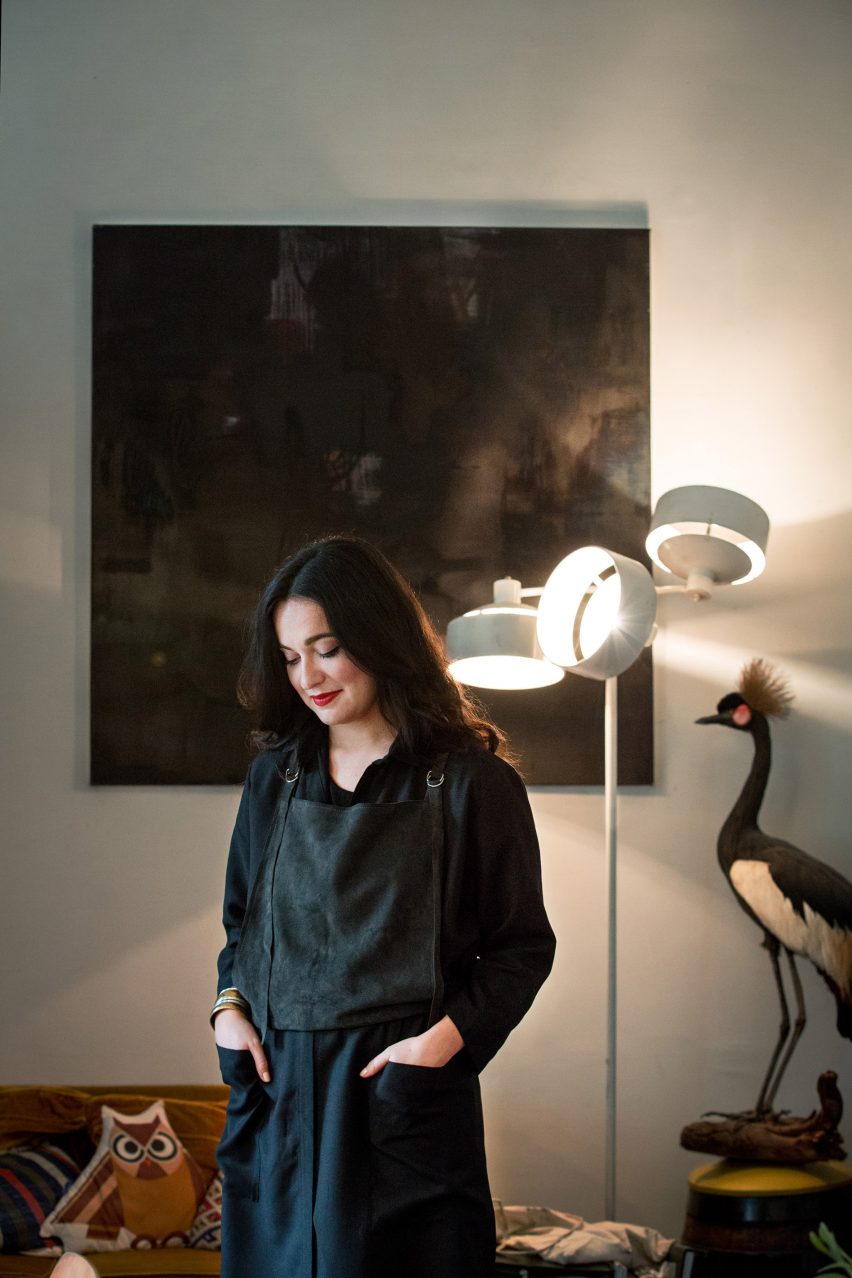
The light grey wool coat for Feltus – creative director at Bureau F – is based on grid paper notepads and suitable for presentations, while photo restorer Taiyoung Ha's lab coat-like linen garment can be worn back-to-front when protection from chemicals is required.
The exhibition of A Character's Coat Presents is on at Alte Post, Dominikanerbastei 11, during alongside Vienna Design Week, which ends on 9 October 2016.
Other works showing at the festival include FredriksonStallard's sun-like installation made from 8,000 Swarovski crystals and Thomas Feichtner's minimal tableware featuring uneven washes of gold.
Photography by Marlena König.